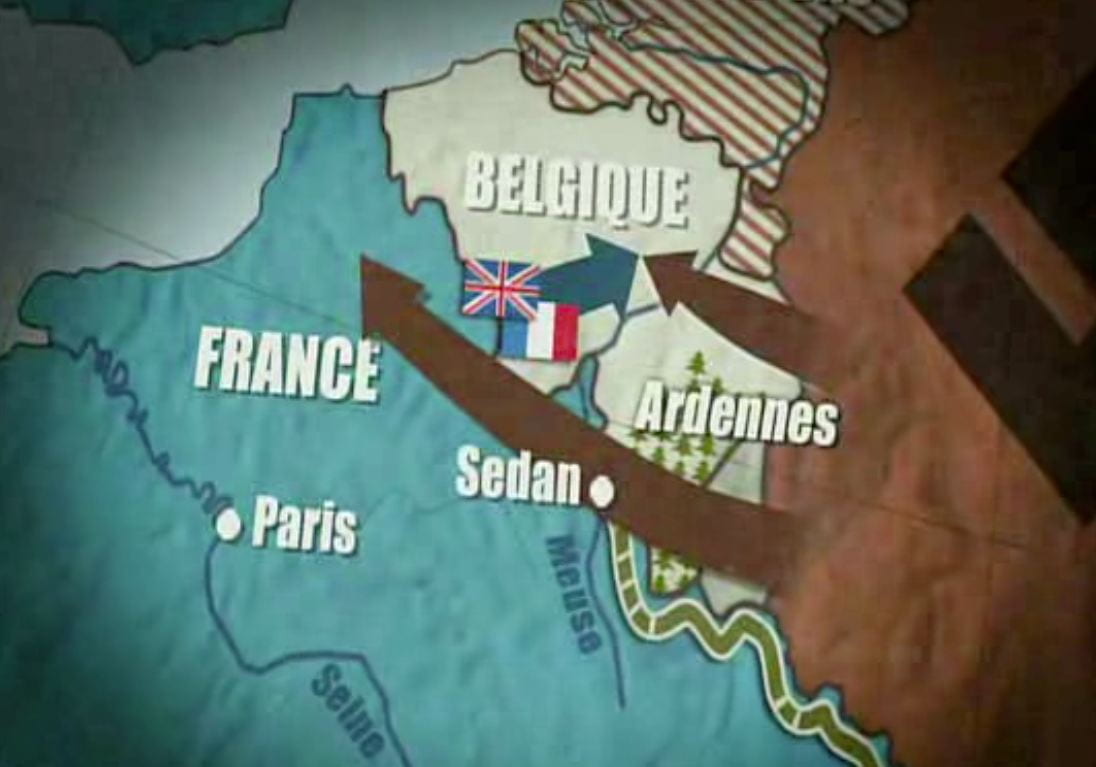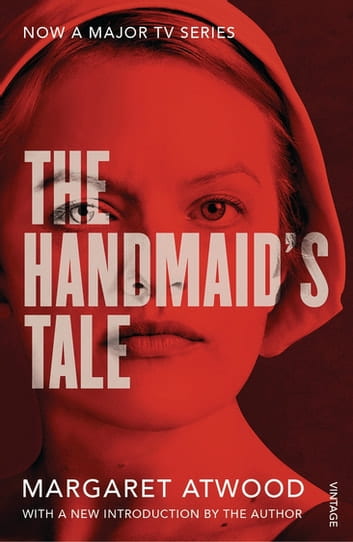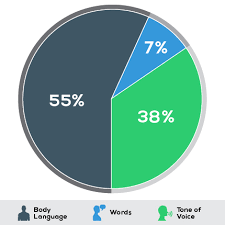
(Picture Source)
Throughout human history, WWII was the largest and bloodiest global conflict ever. Around 3% of Earth died because of the War; in other words, 70 – 85 million died because of WWII. More than 30 countries participated in the war, making it the most significant and influential atrocity. At the same time, WWII had completely changed the course of history and shaped our identity. In this blog post, I will unveil the hidden chapters of history — WWII.
Causes of WWII
Before we go into the war and its consequences, we must understand how it happened. Back when WWII, Germany was forced to sign the treaty of Versailles. The allies forced them to take responsibility for all the harm produced in WWII. Although it was beneficial for the allied forces, the treaty of Versailles ruined Germany’s economy badly. Before the Treaty of Versailles, the currency between dollars and marks was 1:4. However, the ratio immediately jumped to 1:100 after the Treaty of Versailles was signed. Worse yet, the Great Depression in the 1930s further damaged Germany’s economy. In 1924, the currency ratio of dollars to marks reached 1: 4 trillion. Not only was the economy was terrible, but Germany also had to give up military forces and lots of territories. Under extreme situations, people take extreme actions. During the time, the communist and socialist parties were the most popular in Germany. Under the lead of Adolf Hitler, the socialist party won the election in 1933. Almost immediately, Hitler and the Nazis killed their political opponents. It was a turning point for Germany, from socialism to fascism.

(Picture Source)
Pacific War
While the Nazis gained most of our attention, We often forgot Imperial Japan and the Pacific war. Like Germany, the Japanese economy was also terrible before WWII. As nationalism grew, soldiers became one of the best jobs for many Japanese. Because they fundamentally lacked natural resources, they were looking for some from another country. They capture Korea, Taiwan, and Manchuria. At the time, China was extremely weakened, and they couldn’t stop all this from happening. At the same time, the allies never thought Japan would be dangerous to them. The allies traded with Imperial Japan, offering all the natural resources and battleships they lacked. Moreover, Japan sent students to study and learn western technologies, which helped Japan long term.
Gaining momentum
Back in Europe, Hitler and the Nazis never stop expanding. Hitler launched a “friendly invasion” against Austria. As Austria and Germany see each other as their “cousins”, there was almost no resistance at all. Soon, Hitler launched another invasion against Czechoslovakia. The allies didn’t want to start another war, so they tried to fulfill Hitler’s desire. On September 30th, 1938, Hitler, Mussolini, French Premier Edouard Daladier, and British Prime Minister Neville Chamberlain signed the Munich Pact. They died together which part of Czechoslovakia should be Germany’s. In exchange, Hitler promised that he would stop invading others. However, Hitler didn’t keep his promises. On September 1st, 1939, the Nazis invaded Poland. France and the British immediately declared war on the Nazis. Although Poland was the 4th largest Allied arm force, it couldn’t defend the Nazis and USSR attacking from two sides.

(Picture Source)
Meanwhile, since Japan didn’t have any predators, they could expand quickly. In 1937, the 2nd Sino-Japanese War started. It was an all-out war between China and Japan. Many historians considered this as the start of WWII. The Imperial Japan Army quickly swept through the main cities. Moreover, the Chinese Capital, Nanking, fell in the same year. As soon as they entered Nanking, the massacre began. It continued for three weeks, causing the death of 300,000 Chinese civilians. Furthermore, the Japanese generals had a competition “Who can kill more?”.

(Picture Source)
Imperial Japan thought China would surrender once they occupied the most industrialized cities. However, they were wrong. They faced stronger and stronger resistance from Chinese fighters as they expanded in China. In 1938, the Chinese government created the yellow river flood. It was an attempt to stop the Japanese from invading. 20,000 Japanese soldiers died because of the yellow river flood. On the other hand, almost 1 million Chinese died because of the flood. I believe it was one of the most idiotic decisions the Chinese government had made.

(Picture Source)
Meanwhile, Japan also wanted Siberia from the Soviet Union. They decided to invade Mongolia, which was a Soviet puppet state s during the time. Because Japanese tanks were underdeveloped, they lost the decisive battle at Khalkin Gol. The Imperial Japan army lost its best squads. The battle of Khalkin Gol forced Japan to abandon its plan to expand through the land. So instead, they focused on naval battles.
Axis at its peak
With the fall of Poland, the Nazis and allied powers had a “phoney war”. The phoney war was known for its peacefulness. There were no invasions or hostility from either side. It was kind of like the Cold War, except that both sides were preparing for a large-scale invasion. France and the British tried to launch a “friendly invasion” against Norway to control their Natural resources; however, the Nazis were faster. The oil, steel and coal from Norway had helped the Nazis a lot throughout the war. One month after, Hitler launched his well-prepared invasion against France. They went through the forest Ardennes and split the allies in half. The allies launched many counterattacks; however, they failed to stop the Nazis. Although It was an astounding success for Hitler, the Nazis failed to eliminate Allied soldiers. The evacuation at Dunkirk saved many people, which allowed allies to continue fighting the Nazis. Along with the evacuation at Dunkirk was the fall of France. Hitler also wanted to capture England; however, the plan was scratch as the British eventually gained air and naval superiority.

(Picture Source)
At the same time, Imperial Japan decided to expand southward. As the United States noticed what was going on in the Pacific, they embargoed Japan from getting more natural resources. It was terrible for the Japanese, but they knew exactly how they could overcome it. If they could capture the Philippines, Indonesia and Australia, they could have all the oil needed. But before their dream came true, they wanted to overcome the biggest obstacle: the United States. So on December 7, 1941, they bombed Pearl harbour. They tried to knock out the US for at least six months so they could do whatever they wanted. Specifically, they were looking for US carriers. Unfortunately for Japan, all three aircraft carriers were out to sea. They did not accomplish their objective; however, they still damaged/sunk more than 20 battleships at pearl harbour. Along with that was the fall of the Philippines, Indonesia, Singapore, Guam, Wake Island, the Philippines and most importantly, the US declaration of war.

(Picture Source)
Turning point — the year 1942
The defeat for Hitler — Battle of Stalingrad
One of Hitler’s fundamental goals was to achieve Lenbresaum(living space). He would have to expand eastward to capture all USSR territories. It is also known as operations Barbarossa. Everything was going well for the Nazis at the start. The Northern Nazi army pushed to Leningrad; the Centre army pushed to Moscow; the southern army pushed to Stalingrad. Although many Nazi generals suggested that Hitler should capture Moscow first, he decided to invade Stalingrad anyways. Because of symbolic and strategic reasons, Joseph Stalin defended the city furiously. The Soviet Union launched an encircle counterattack and trapped the Nazi army. In the end, the USSR defeated the Nazis and destroyed their best forces. The battle of Stalingrad was the bloodiest battle during WWII, suffering the death of 2 million people in total. It was the turning point for the allied powers to win against the Nazis

(Picture Source)
Tide turning in Pacific — Battle of Midway and Guadalcanal
Meanwhile, the tide was also changing in the Pacific. The United States and Japan were both preparing for a decisive battle. Both sides knew whoever won the battle would control the Pacific Ocean. We now know the invasion would be at midway, but how did the US know that? Through decoding Japanese messages, the US knew Japan was launching an invasion towards “AF”. However, they weren’t sure if “AF” meant midway. To ensure AF is midway, they set up a trap. They told the Japanese that Midway was running out of freshwater. Two days later, they block a radio report saying AF was running out of fresh water. The US immediately reinforce midway. On June 4, 1942, Imperial Japan launched their invasion. Although they have naval and air superiority, they failed to capture midway. In the end, the US sank all for Japanese carriers with the cost of one aircraft carrier. It was an astounding success for the allies.

(Picture Source)
However, the defeat at midway didn’t stop Imperial Japan from its ambitious goals. They believed it was still possible for Japan to defeat the allies. They focused on Australia. From August to November, Japan took many attempts to take over the Henderson field. Once the Henderson field fell, the Japanese could isolate Australia and eventually capture all of Austria. However, they didn’t accomplish their goal because they lack air and naval powers. In total, Japan lost 22,000 men while the US only lost 1000. The series of battles was also known as the battle of Guadalcanal. From now on, Japan held on to a defensive position.

(Picture Source)
End of the War — 1945
After the turning points, the Axis forces were weakened. Let us start with the Nazis. Since the battle of Stalingrad, the USSR had launched many counterattacks, forcing them to retreat. At the same time, the Allies captured all of northern Africa, which exposed Vichy France and Italy. The successful landing at Italy and Normandy made the situation even worse for the Nazis. Hitler tried to avoid fighting two fronts; however, now they were surrounded by all three sides. Hitler knew, sooner or later, all Nazis would get annihilated. So on April 30, 1945, he committed suicide. Along with that was the fall of Berlin and V-E day.

(Picture Source)
At the same time, Imperial Japan wasn’t doing so well either. The US decided to break through their defensive line to land on the Japanese mainland. It was also known as the operation downfall. Eventually, they approached Iwo Jima, which was only 750 miles from Japan’s mainland. Because of strategic reasons, Imperial Japan defended Iwo Jima furiously. In the end, the US suffered the causality of 27,000 while almost all 22,000 Japanese fought to their death. Japanese warriors believed it was an honour to die on the battlefield; meanwhile, surrender would be the worst thing that could happen. Therefore, they never surrender nor accept POWs. With the fall of Iwo Jima, the allies approach their final step, capturing Okinawa. The battle of Okinawa was the bloodiest throughout the Pacific war. The allies suffered the death of 49,000 men while all 110,000 fought to their death. Because of the blood at Iwo Jima and Okinawa, the allies realized they would suffer massive casualties to land the Japanese mainland. So they gave up on their original plan and Nuked Hiroshima and Nagasaki. Along with that was the Soviet Union’s declaration of war on Japan. On September 2, Imperial Japan finally surrendered. The decision Hiroto made seemed to be unbelievable for many Japanese fighters. The V-J day officially marked the end of WWII.

(Picture Source)
Consequences — Who won in the war?

(Picture Source)
In total, 50 to 56 million people died directly because of WWII with an estimated an extra 20 million dying indirectly because of WWII (From starvation & disease). After all, there was no clear winner in WWII. US suffered 405,000 men throughout WWII. Meanwhile, the British suffered the death of 384,000 soldiers and 70,000 civilians. Germany lost 4.1 million soldiers, including both killed and missing. In addition, 500k – 2 million German civilians died because of USSR war crimes. Meanwhile, the Japanese lost a total of 3 million lives. The Jewish community suffered the death of 6 million. China suffered the death of 4 million soldiers and 18 million civilians. Moreover, the Soviet Union lost 10 million soldiers and 24 million civilians. So who won in WWII? The economic destruction was also remarkable. After WWII, many countries desperately needed money to rebuild their country. WWII was the most expensive war ever and it caused inflation to jump over 20%. Not only did WWII cause large-scale destruction to all nations, but it also lead to more civil wars and even the Cold War.
Conclusion & Answer to Driving Question
“How might we use stories to better understand to cause and consequences of WWII?”
Most of us today have never experienced WWII. Eventually, everyone who had participated in WWII would leave before us. We have paid a heavy cost in WWII, and it is our job to keep the stories alive. Not only do stories structure and organize our knowledge, but they also keep our culture alive and allow us to relate to the situation. Moreover, stories help us to shape our identity and core values. If everyone understands how brutal wars can be, no one will start the war. Therefore, I value the stories passed down from WWII, and I believe we should maintain a strong public awareness.
Learning Journey
Novel Study

(Picture Source)
For my novel study, I have recently read Maus, written by Art Spiegleman. Everything we have talked about previously was from “god’s point of view”; however, it could be a different story if you view it from civilians’ perspective. Within 300 pages, Art Spiegleman shows the brutality of the Axis, specifically the Nazis. Through drawings, he showed how difficult life was as a Jew; moreover, he showed dynamic characteristics of human nature. Not only did Maus show the significant consequences of WWII, but it also challenged me to view different perspectives. Through unique characters, Art Spiegleman encouraged me to see things from their point of view. Although Maus was tragic, perhaps dark, it is worth reading.
Podcast
After we had enough knowledge, we created a podcast to spread our knowledge. In total, the grade 10 cohort had published over 20 episodes. Each of us chose our topic. From the vehicles to psychological impacts, we have studied diverse fields of WWII. For my podcast, I investigated the Pacific War and Imperial Japan. Although I have lots of trouble recording my script, I managed to produce a podcast with decent quality. While making the podcast, I also investigated different podcasts to increase my podcast quality. Overall, I have learned a new technique — communicating with others with just voice.
Russian and Ukrainian Studies

(Picture Source)
One of our fundamental goals in this unit was to prevent WW3 from happening, we’ve been studying Russian-Ukraine conflicts. The Russian-Ukraine conflict was the largest conflict since WWII. Many consider this would trigger the start of WW3. I can see the effort the United Nations have made. At least, they didn’t repeat the failure of appeasement. To this date, over 600 civilians have died, with 1000 injured. It is still ongoing; in other words, we have a chance to stop WW3 from happening.
Thank you for your time








































